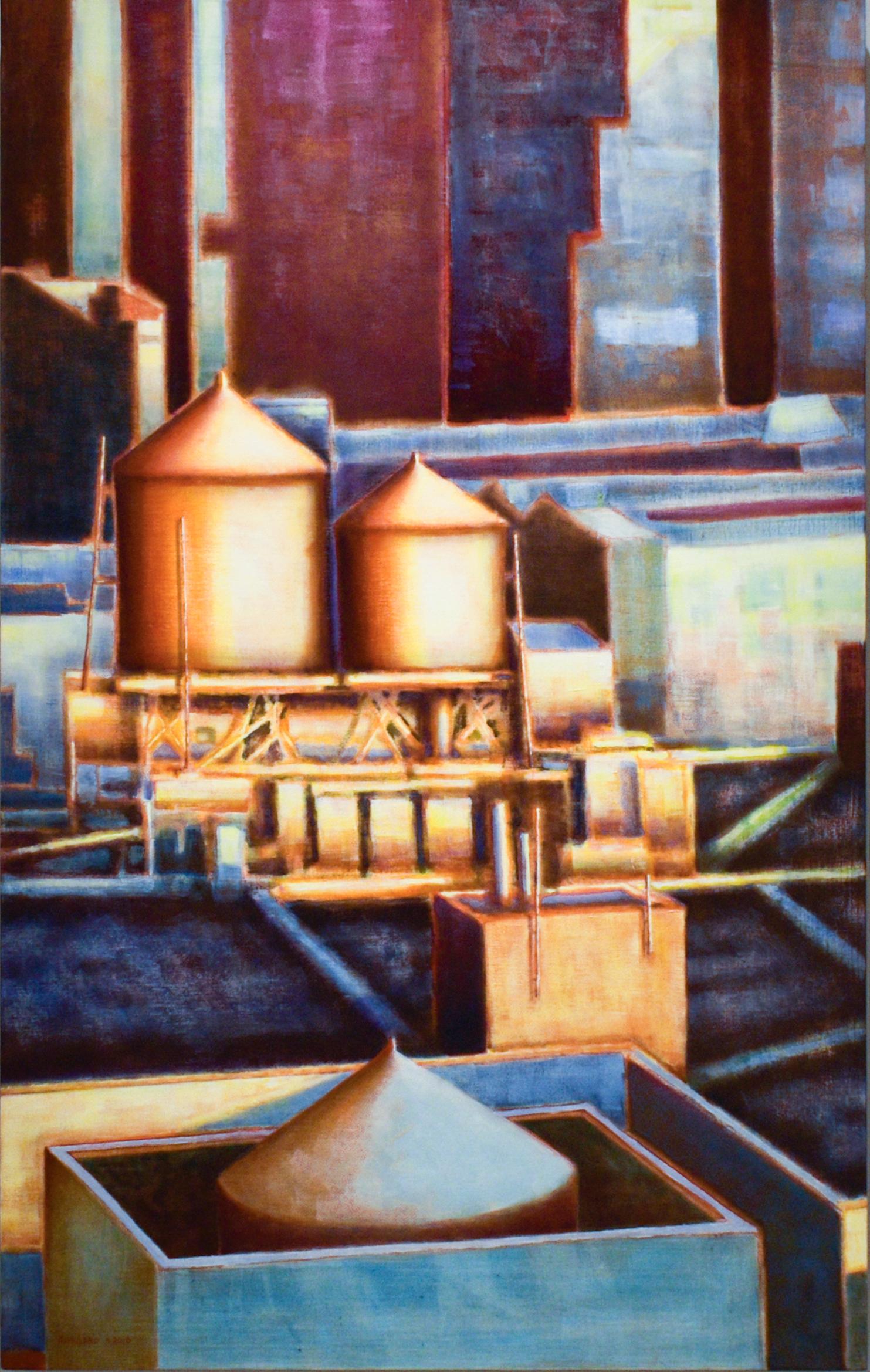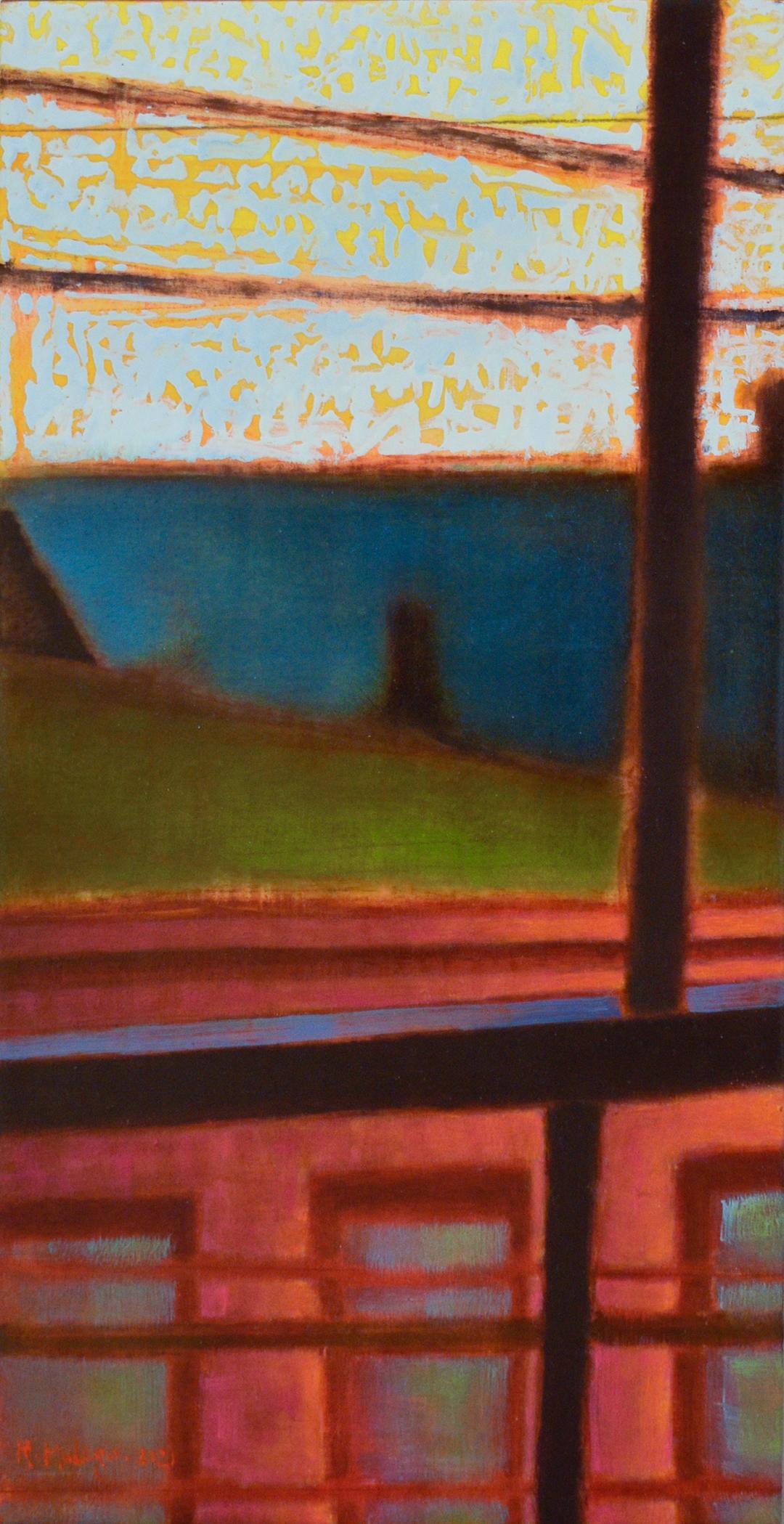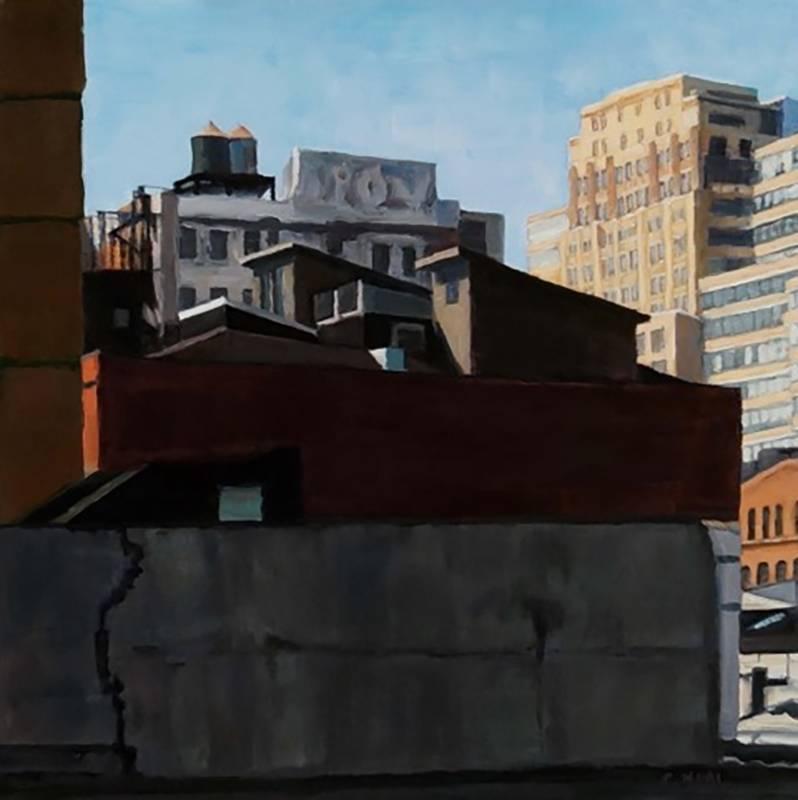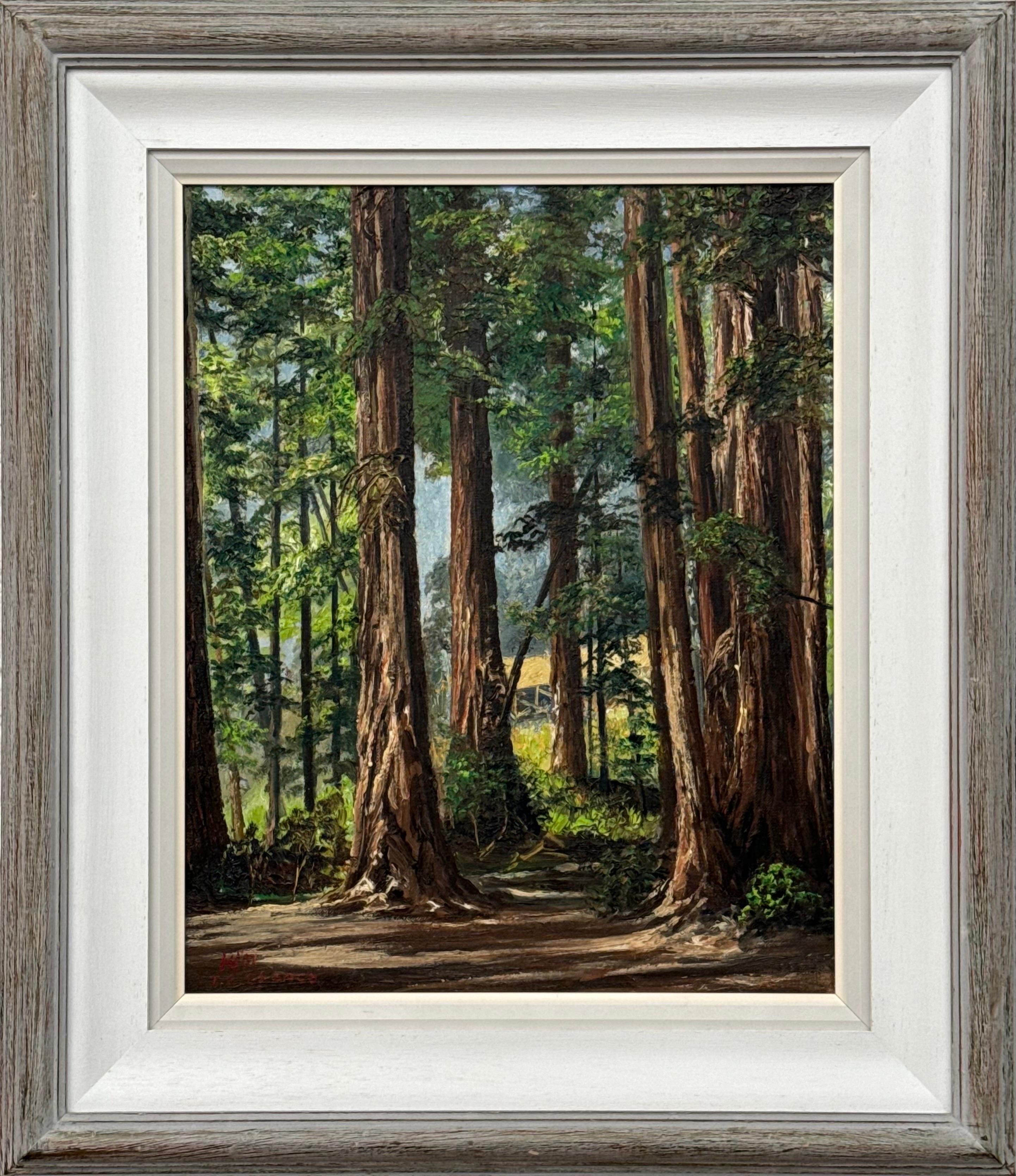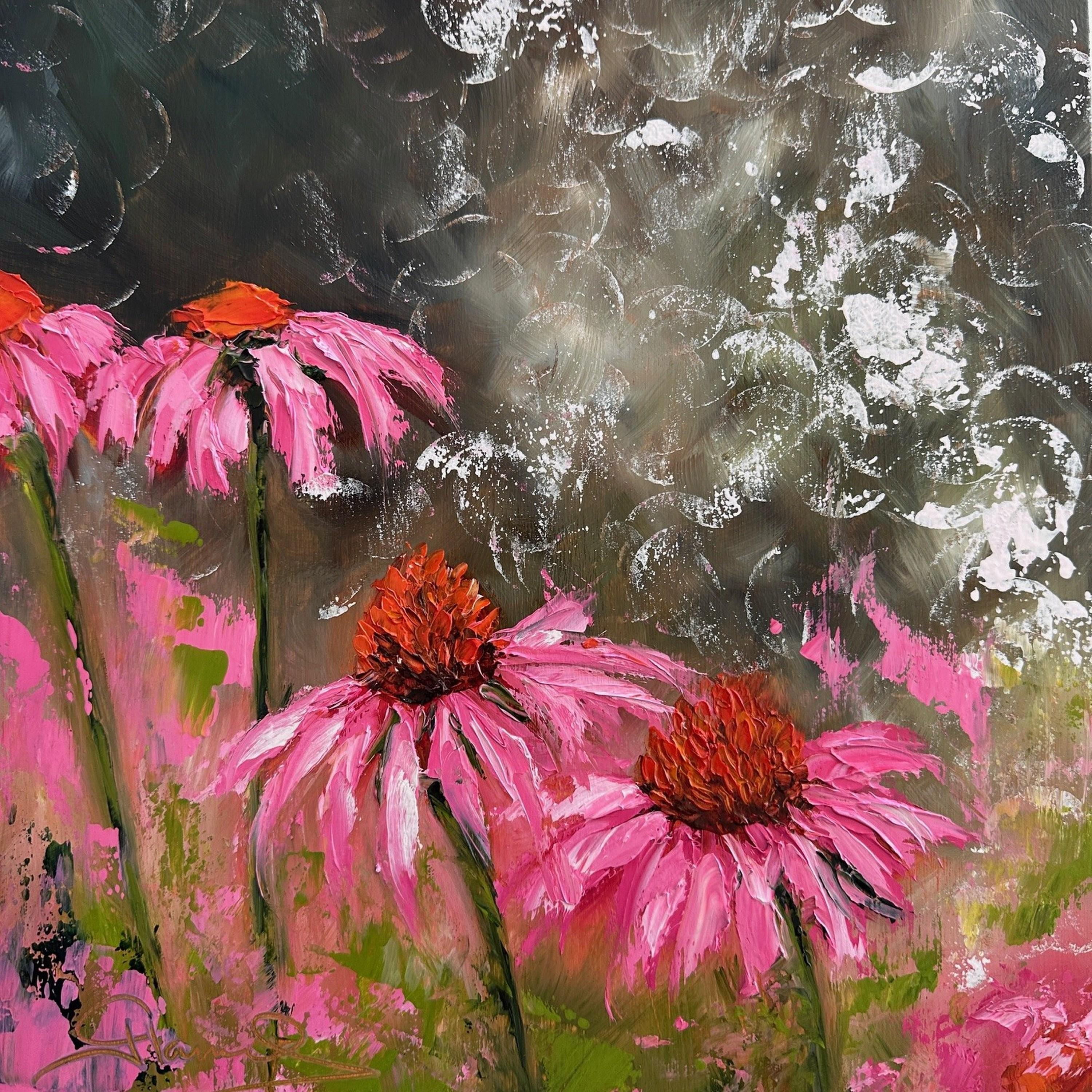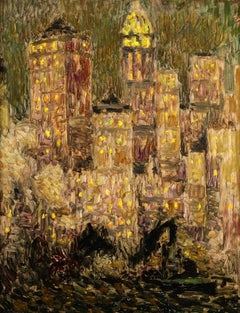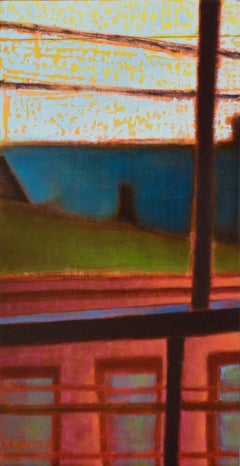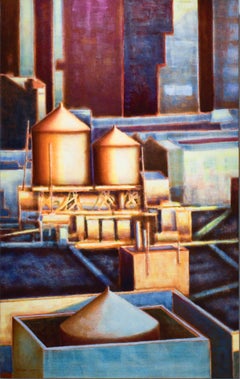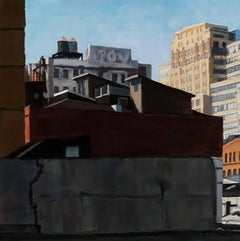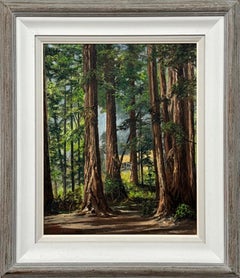Articles similaires à Elegante sur Les Grands Boulevards - Modernist Figurative Oil by Louis Anquetin
Vous voulez plus d'images ou de vidéos ?
Demander au vendeur plus d'images ou de vidéos
1 sur 16
Louis AnquetinElegante sur Les Grands Boulevards - Modernist Figurative Oil by Louis Anquetinc.1895
c.1895
7 871,77 €
Expédition
Recherche du devis...La promesse 1stDibs :
Garantie d'authenticité,
Garantie de remboursement,
Annulation sous 24 heures
À propos de cet article
Signed oil on panel circa 1895 by French modernist painter Louis Anquetin. This beautiful piece depicts an elegant lady dressed in a blue dress and hat walking in the Grand Boulevards in Paris.
Signature:
Signed with cachet lower right
Dimensions:
Framed: 16.5"x20"
Unframed: 10.5"x14"
Provenance:
The estate of the painter
Acquired by the previous owner at the sale of the Estate of Louis Anquetin - Thierry de Maigret - Paris (Lot 35, 28th November 2008)
Louis Anquetin went to school in Rouen. He was given an allowance by his father, a well-off shopkeeper, to go and study painting in Paris. In 1882 he entered the free academy run by Cormon, where he was heavily influenced by the Impressionists, particularly Monet, whom he revered, but also Degas (especially his Japonist periods). Anquetin was extremely talented and made an impression on Van Gogh, who met him during his time in Paris, and Toulouse-Lautrec, a close friend who also admired his work. Some sources claim that Anquetin, Van Gogh, Toulouse-Lautrec and Émile Bernard met at Cormon's academy. Because of his great skill, Anquetin experimented with many of the techniques he encountered, perhaps at the expense of developing a real personality of his own. In 1887 the rigours of Pointillism and Seurat's theories on 'scientific Impressionism' seduced him, but not for long. In 1888 he met Émile Bernard and his friends, and discovered that they all shared an enthusiasm for the work of Gauguin, his contemporary subjects and flat areas of colour with bold outlines, which was known at the time as Gauguin's Synthetism. Artists would gather at the Café Volpini, where they also exhibited their Symbolist/Synthetist paintings. Following on from their reflections on the works of Gaugin, Bernard and Anquetin defined one aspect of his work under the term 'Cloisonnism'. The question of which of them came up with this term would later be heavily disputed.
Anquetin exhibited at the Salon des Artistes Indépendants for the first time in 1888. In 1891 he showed his works at the gallery Le Barc de Boutteville alongside the Nabis. He exhibited at the Salon of the Société Nationale des Beaux-Arts from 1890 to 1914, and became a member in 1907. In 1892 he exhibited at the Rose+Croix Salon at the Galerie Durand-Ruel. In 1812 he participated in the Salon d'Automne, where the theme was the 19th-century portrait. Here he showed his Portrait of Monsieur Janvier in the Role of Lampourde, which was probably painted before 1900 and is perhaps the same work as his 1887 Portrait of an Actor. As a result of these official events, Anquetin received a commission from the Gobelins manufactory for a tapestry cartoon on the subject of War and Peace, and was decorated with the Légion d'Honneur. Private commissions included a ceiling painting of Rinaldo and Armida in the house of Baron Empain in Brussels, a theatre curtain for the Théâtre Antoine in Paris, which was bought by the city authorities, and decorations for the Cercle Artistique in Nice.
In 1888 Anquetin's style was very similar to that of Émile Bernard, as can be seen, for example, in the former's Reaper in the Fields of 1886. The distinction between the two artists came with Anquetin's Portrait of an Actor and Woman in the Street. Then, in 1890, for a variety of reasons (his interest in anatomy, his desire to return to composition and grand subjects, and a quest for movement), Anquetin took to studying the 17th-century Flemish masters such as Rubens and Jordaens. He broke with the innovators for good and progressively returned to traditionalism. He was 30 at the time, and his youthful sense of adventure had gone. By 1896 he had abandoned all interest in modernity, as can be seen in his painting Fighting, which he exhibited in 1896. From that point on he permanently adopted the Rubenesque model in terms of his themes, the way that he arranged his compositions, and the details of his backgrounds and ornaments. He studied Rubens' technique in minute detail, for example Rubens' use of glazes to create transparent effects and give his colours a light, airy quality. When invited to write an essay on Rubens for the Comoedia review, Anquetin lamented the lack of interest in technique shown by his contemporaries and called for the establishment of a technique class at the École des Beaux-Arts.
Anquetin's artistic journey followed a trajectory parallel to that of his friend Émile Bernard. Like Anquetin, Bernard suddenly abandoned his youthful exuberance for an almost obsessive return to tradition, in his case a focus on 17th-century Spanish artists like Murillo, and Bolognese painters such as the Carracci, who founded the Accademia dei Desiderosi. Was Anquetin consciously abandoning modernism, or was he simply a casualty of the public's disaffection with modern art? Whatever the reason, he ended his days a solitary misanthrope. However, his talent still sometimes shone through, particularly when he was able to tap into human reality, as with his Self-portrait and Portrait of the Actor Firmin Gémier in 'La Rabouilleuse'. The paintings are nostalgic proof of what Signac once said about Anquetin: 'If a creative spirit had only a tenth of his talent, he would produce wonders.'
Museum and Gallery Holdings:
La Rochelle: Towers of La Rochelle
London (Tate Collection): Girl Reading a Newspaper (1890, pastel/paper); The Finish of the Horse Race (c. 1898-1899, watercolour/board); studies
Paris (MNAM-CCI): Racing; Child in Profile; Still-life Study; Woman in the Street; Portrait of the Marguerite Brothers; Study of a Male Nude Leaping (drawing); Bust of a Woman in Profile (pen); Cavalry Battles (pen)
- Créateur:Louis Anquetin (1861 - 1932, Français)
- Année de création:c.1895
- Dimensions:Hauteur : 41,91 cm (16,5 po)Largeur : 50,8 cm (20 po)
- Support:
- Mouvement et style:
- Période:
- État:Very good condition.
- Adresse de la galerie:Marlow, GB
- Numéro de référence:Vendeur : LFA02481stDibs : LU415316513862
À propos du vendeur
5,0
Vendeur Platine
Vendeurs premium dont la note est supérieure à 4,7 et le délai de réponse de 24 heures maximum
Établi en 2001
Vendeur 1stDibs depuis 2016
705 ventes sur 1stDibs
Temps de réponse habituel : 1 heure
- ExpéditionRecherche du devis...Expédition depuis : Marlow, Royaume-Uni
- Politique des retours
Certaines parties de cette page ont été traduites automatiquement. 1stDibs ne garantit pas l'exactitude des traductions. L'anglais est la langue par défaut de ce site web.
Garantie d'authenticité
Bien qu'il soit peu probable que la situation se présente, dans le cas où vous rencontreriez un problème d'authenticité d'un article, contactez-nous dans un délai d'un an pour obtenir un remboursement intégral. DétailsGarantie de remboursement
Si votre article n'est pas conforme à la description, est endommagé pendant le transport ou ne vous est pas livré, contactez-nous sous 7 jours pour obtenir un remboursement intégral. DétailsAnnulation sous 24 heures
Vous disposez d'un délai de 24 heures pour annuler votre achat sans motif.Des vendeurs professionnels agréés
Nos vendeurs de renommée mondiale doivent respecter des normes strictes en matière de service et de qualité, afin de préserver l'intégrité de nos fiches produit.Garantie d'alignement des prix
Si vous constatez qu'un autre vendeur a mis en vente le même article à un prix inférieur sur un autre site, nous nous alignerons sur ce prix.Livraison en toute confiance à l'international
Notre réseau de transporteurs de premier ordre propose des options d'expédition spécialisées dans le monde entier, y compris des livraisons personnalisées.Plus d'articles de ce vendeur
Tout afficherImpression de Brume - Figure impressionniste dans un paysage Huile d'Edouard Cortes
Par Édouard Leon Cortès
Huile sur panneau signée d'un personnage dans un paysage fluvial circa 1920 par le peintre impressionniste français Edouard Cortes. Cette belle pièce représente un ouvrier et ses che...
Catégorie
années 1920, Impressionnisme, Peintures - Figuratif
Matériaux
Huile, Panneau
Les Grands Boulevards - Figures post-impressionnistes dans un paysage urbain par Louis Hayet
Par Louis Hayet
Paysage à l'huile sur panneau vers 1890 du peintre post-impressionniste français Louis Hayet. Le paysage urbain représente des personnages élégants et des chevaux et charrettes sur l...
Catégorie
années 1890, Post-impressionnisme, Peintures - Figuratif
Matériaux
Huile, Panneau
The Arrival - New York - Paysage post-impressionniste Huile d'Henri Le Sidaner
Par Henri Le Sidaner
Huile sur panneau signée du peintre post impressionniste français Henri le Sidaner. Cette pièce étonnante représente les gratte-ciel de New York à la nuit tombée. Des lumières éclair...
Catégorie
années 1930, Pointillisme, Peintures - Paysage
Matériaux
Huile, Panneau
Sur la Plage - Huile impressionniste, figures dans un paysage côtier d'Alfred Stevens
Par Alfred Émile Léopold Stevens
Signé et daté figures dans un paysage marin, huile sur panneau du peintre impressionniste belge Alfred Emile Leopold Stevens. L'œuvre r...
Catégorie
années 1890, Impressionnisme, Peintures - Figuratif
Matériaux
Huile, Panneau
8 307 € Prix de vente
30 % de remise
Le Pont Neuf - Figures impressionnistes dans un paysage - Huile d'Amedee Marcel-Clement
Par Amedee Julien Marcel-Clement
Huile sur panneau signée et datée, figures dans un paysage urbain, du peintre impressionniste français Amédée Marcel-Clément. L'œuvre représente une vue du Pont Neuf qui enjambe la S...
Catégorie
Années 1910, Impressionnisme, Peintures - Figuratif
Matériaux
Huile, Panneau
Vue de Paris - 1906 - Peinture à l'huile impressionniste de paysage fluvial de Camille Roche
Paysage à l'huile impressionniste sur panneau signé et daté du peintre français Camille Roche. Cette pièce magnifiquement colorée représente une vue de la Seine à Paris, en France, p...
Catégorie
Début des années 1900, Impressionnisme, Peintures - Paysage
Matériaux
Huile, Panneau
Suggestions
Rooftops Power Lines, Five & Diamond : peinture de paysage urbain abstrait d'Hudson NY
Par Ricardo Mulero
Peinture abstraite d'un paysage urbain représentant les toits de Hudson, NY, avec des accents de rose, magenta, vert, jaune et sarcelle.
"Rooftops Power Lines and Five & Diamond", de...
Catégorie
années 2010, Moderne, Peintures - Paysage
Matériaux
Huile, Panneau en bois
41e et 10e : Paysage urbain abstrait de style WPA, coqs et tour d'eau de New York
Par Ricardo Mulero
Peinture d'un paysage urbain sur mousseline représentant les châteaux d'eau emblématiques de la ville de New York sur fond de toits abstraits marron, argent et bleu
"41st & 10th" de ...
Catégorie
années 2010, Moderne, Peintures - Paysage
Matériaux
Huile, Gesso, Panneau en bois
City Side, peinture à l'huile moderne de paysage urbain représentant des coqs de Brooklyn
Par Patty Neal
peinture à l'huile sur panneau
12 x 12 pouces
Cette peinture à l'huile contemporaine de paysage urbain est peinte sur panneau de bois dans un style réaliste. La scène représente l...
Catégorie
années 2010, Moderne, Peintures - Paysage
Matériaux
Huile, Panneau en bois
Paysage à l'huile vintage de la forêt de rougewood en Californie par un artiste du 20e siècle
Vintage Oil Landscape Art of Redwood National Park Forest in California by 20th Century Artist, Tobias Everet Spence
L'œuvre d'art mesure 14 x 17 pouces
Le cadre mesure 21 x 24 po...
Catégorie
années 1950, Moderne, Peintures - Paysage
Matériaux
Toile, Huile, Bois, Peinture, Panneau en bois
1 210 € Prix de vente
30 % de remise
Love Bubbles (peinture d'un clou, empâtement, impressionnisme, coloré, rose, gris, chaud)
Geneviève Hamel
Bulles d'amour
Huile sur panneau de bois
Année : 2024
Taille : 12 x 12 x 1.5 pouces
Signé à la main
L'ACO a fourni
*câblé et prêt à être accroché
Les passions de G...
Catégorie
années 2010, Moderne, Peintures - Figuratif
Matériaux
Huile, Panneau en bois
441 € Prix de vente
44 % de remise
Le ciel est la limite (peinture d'un clou, empâtement, impressionnisme, couleur, pastel, froid, impressionnisme)
Geneviève Hamel
Le ciel est la limite
Huile sur panneau de bois
Année : 2024
Taille : 36 x 18 x 1.625 pouces
Signé à la main
L'ACO a fourni
*câblé et prêt à être accroché
Les pass...
Catégorie
années 2010, Moderne, Peintures - Figuratif
Matériaux
Huile, Panneau en bois
1 482 € Prix de vente
24 % de remise
